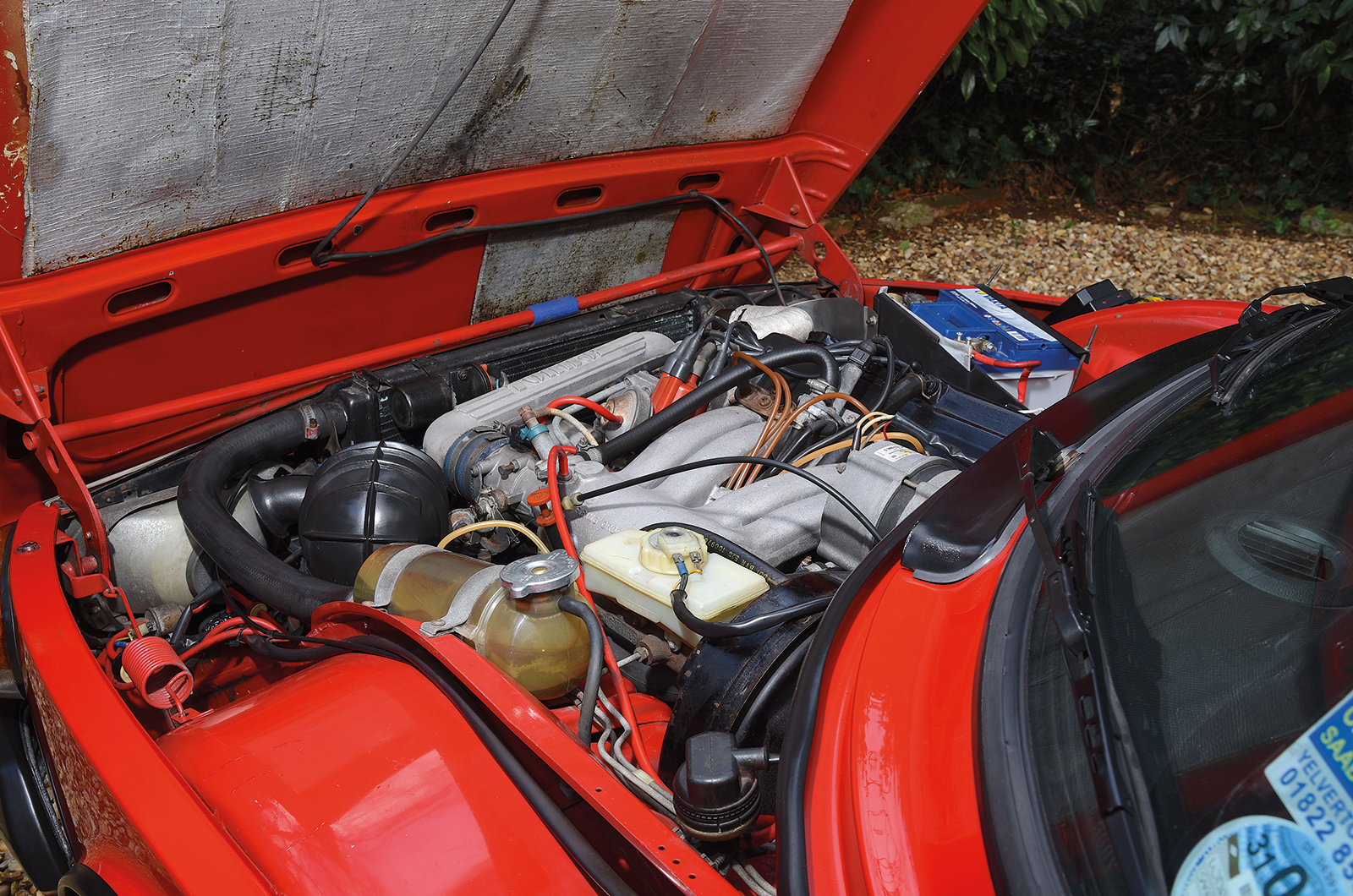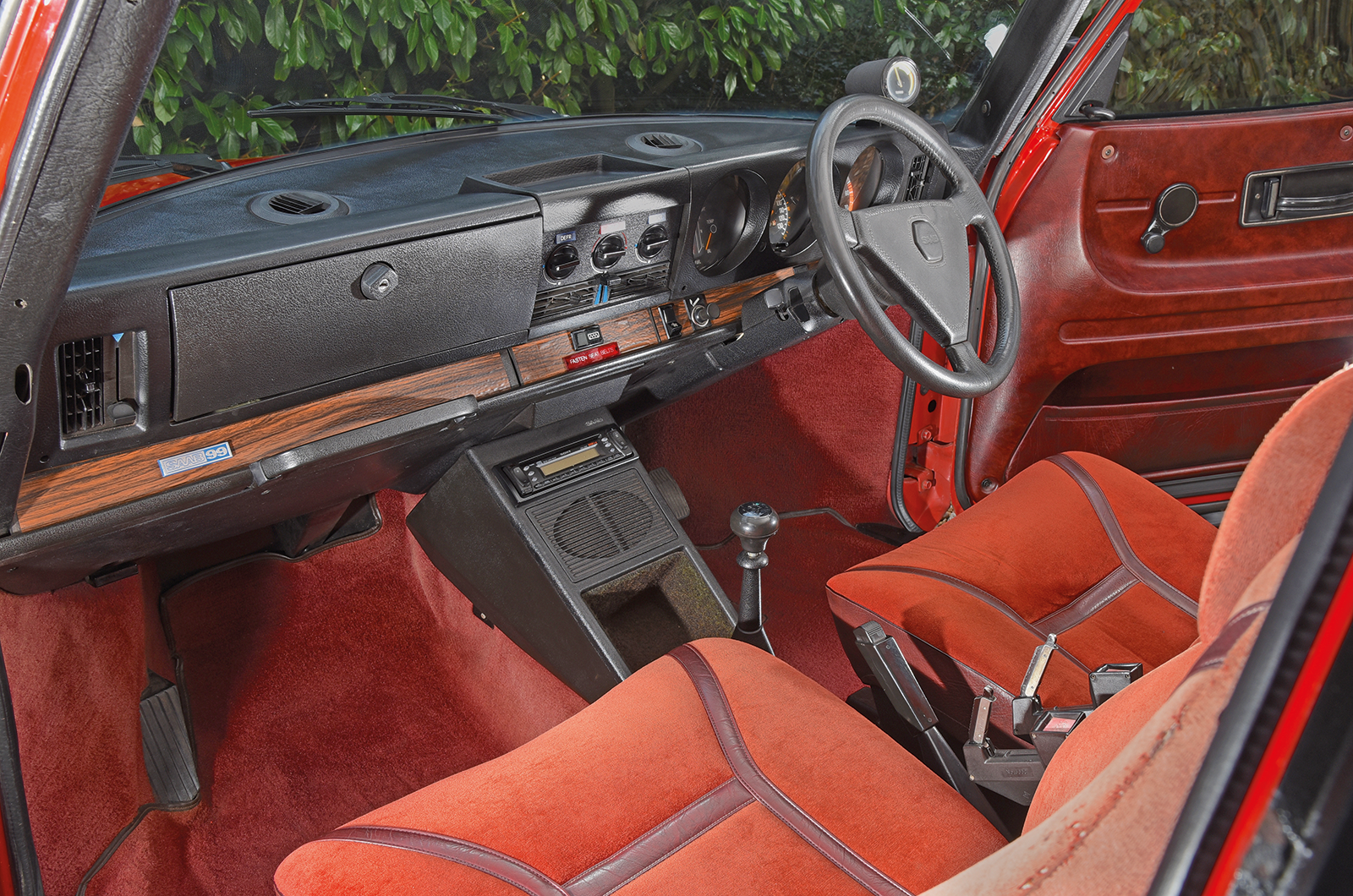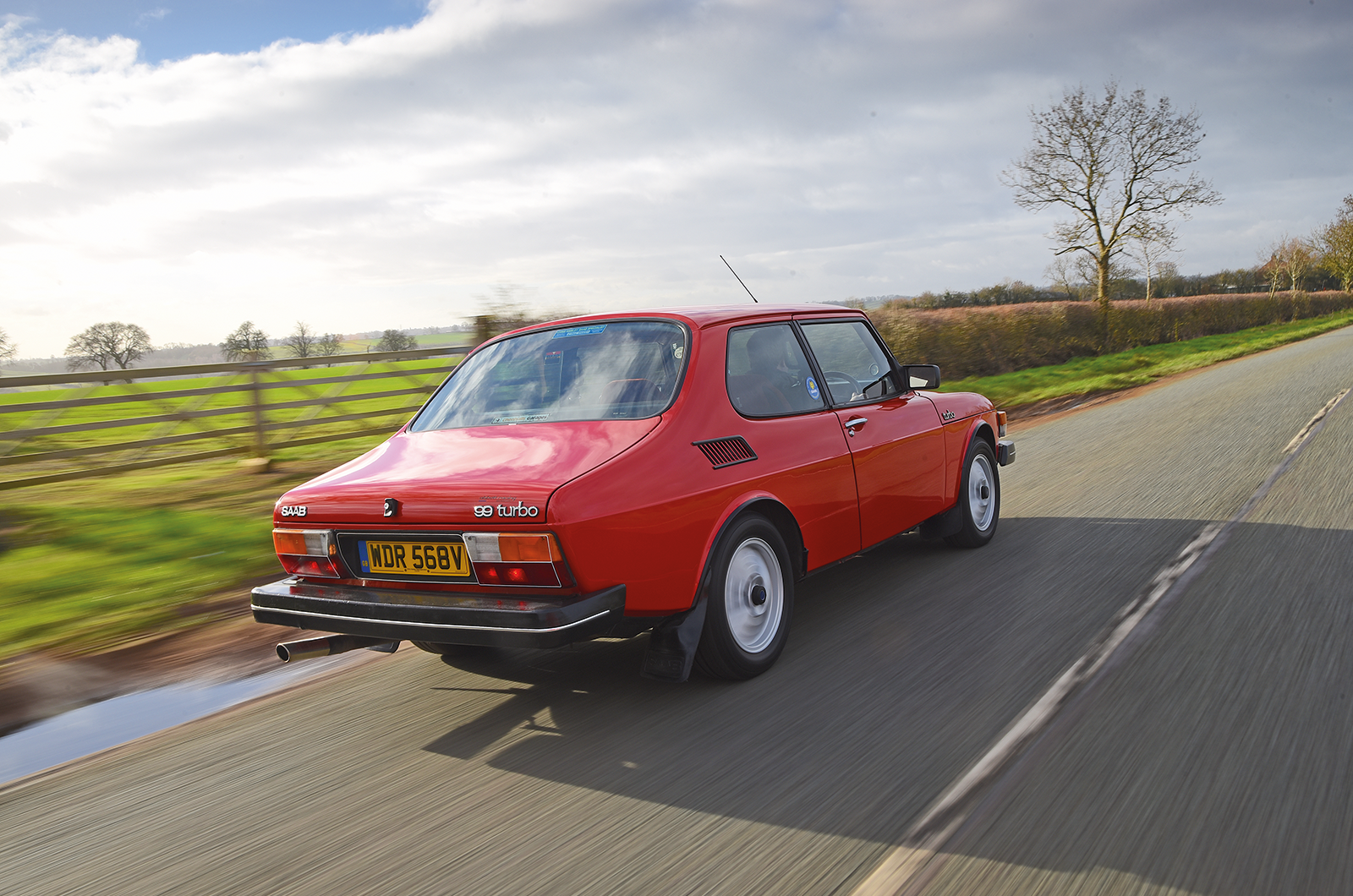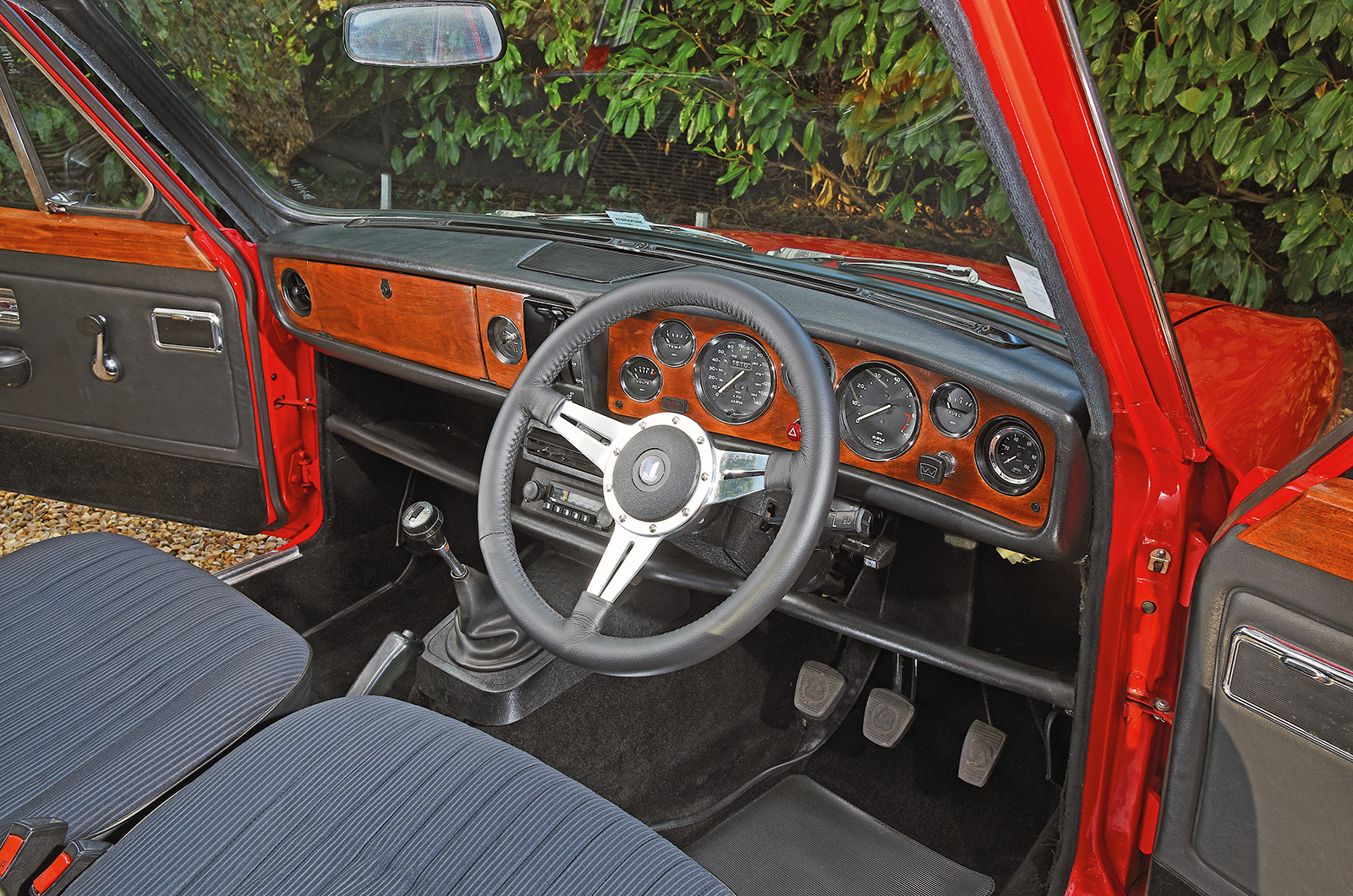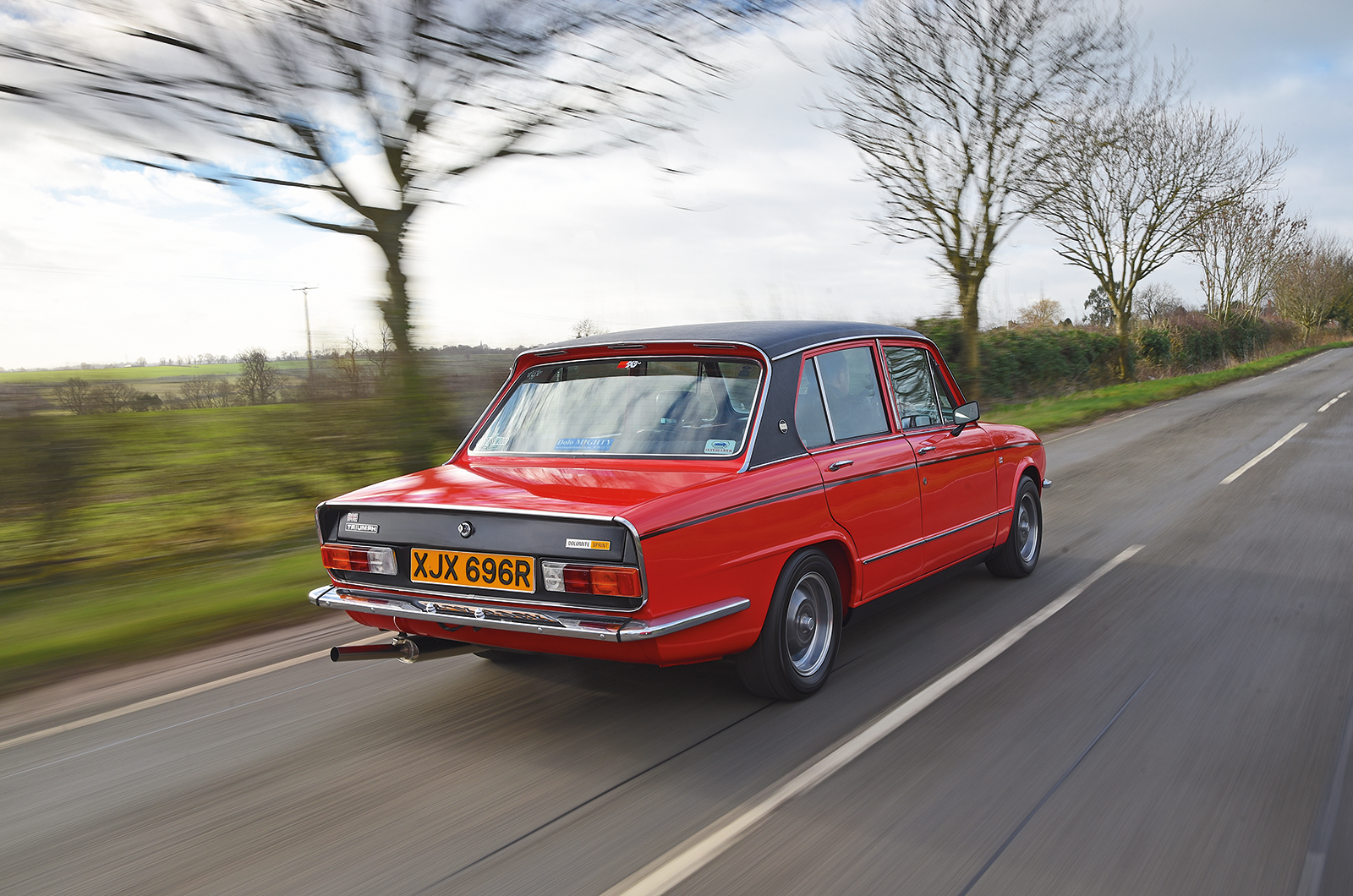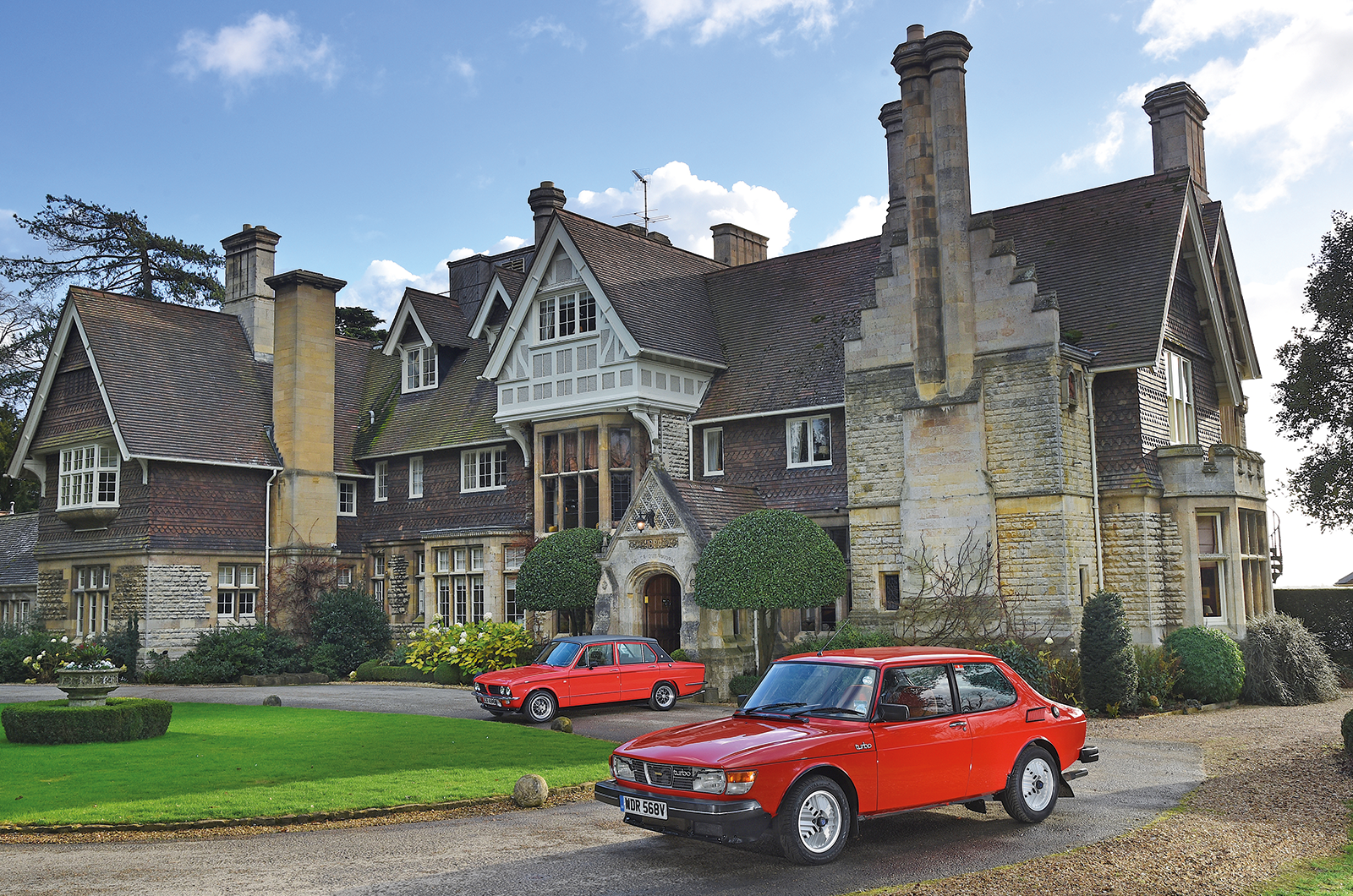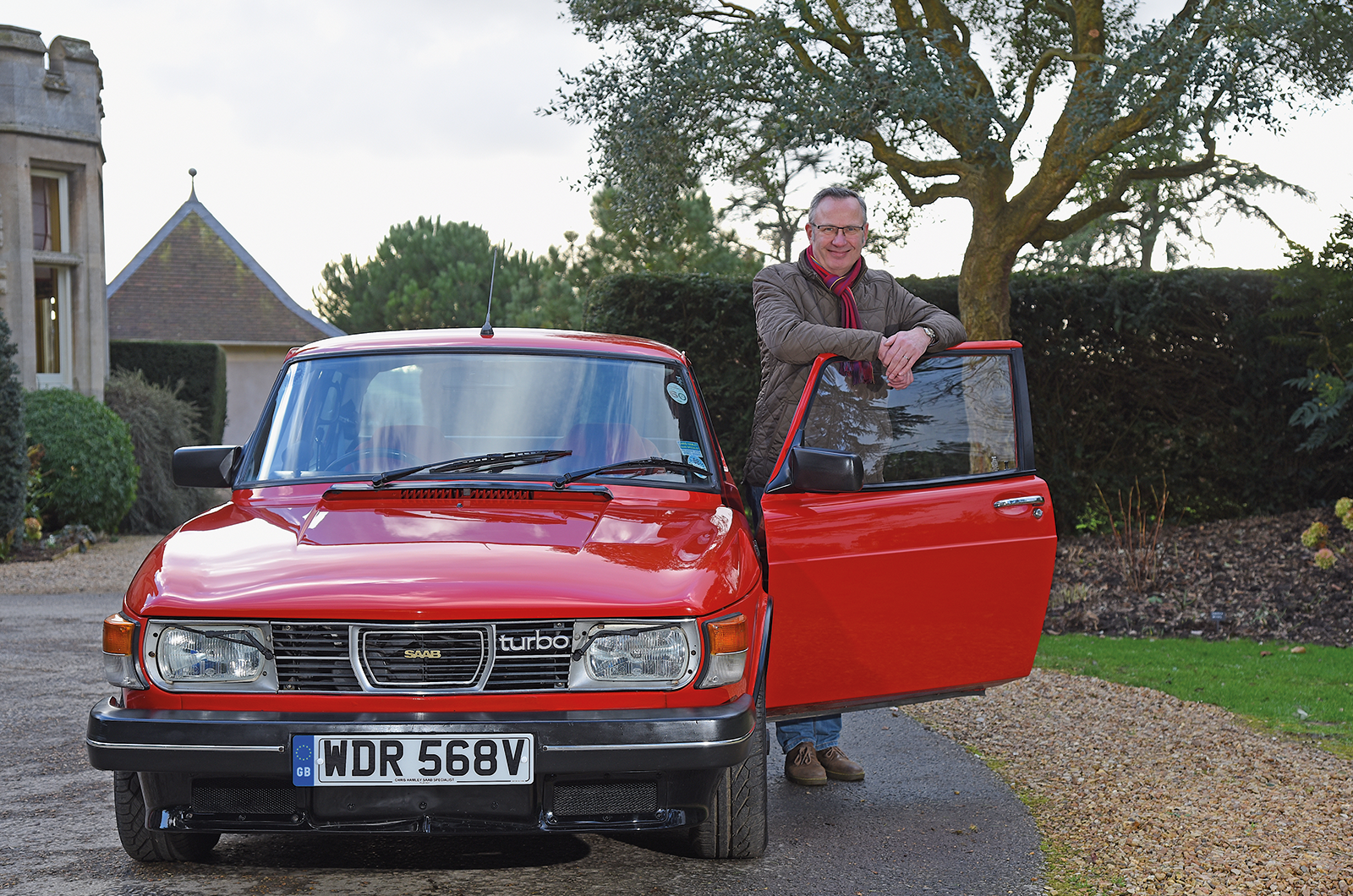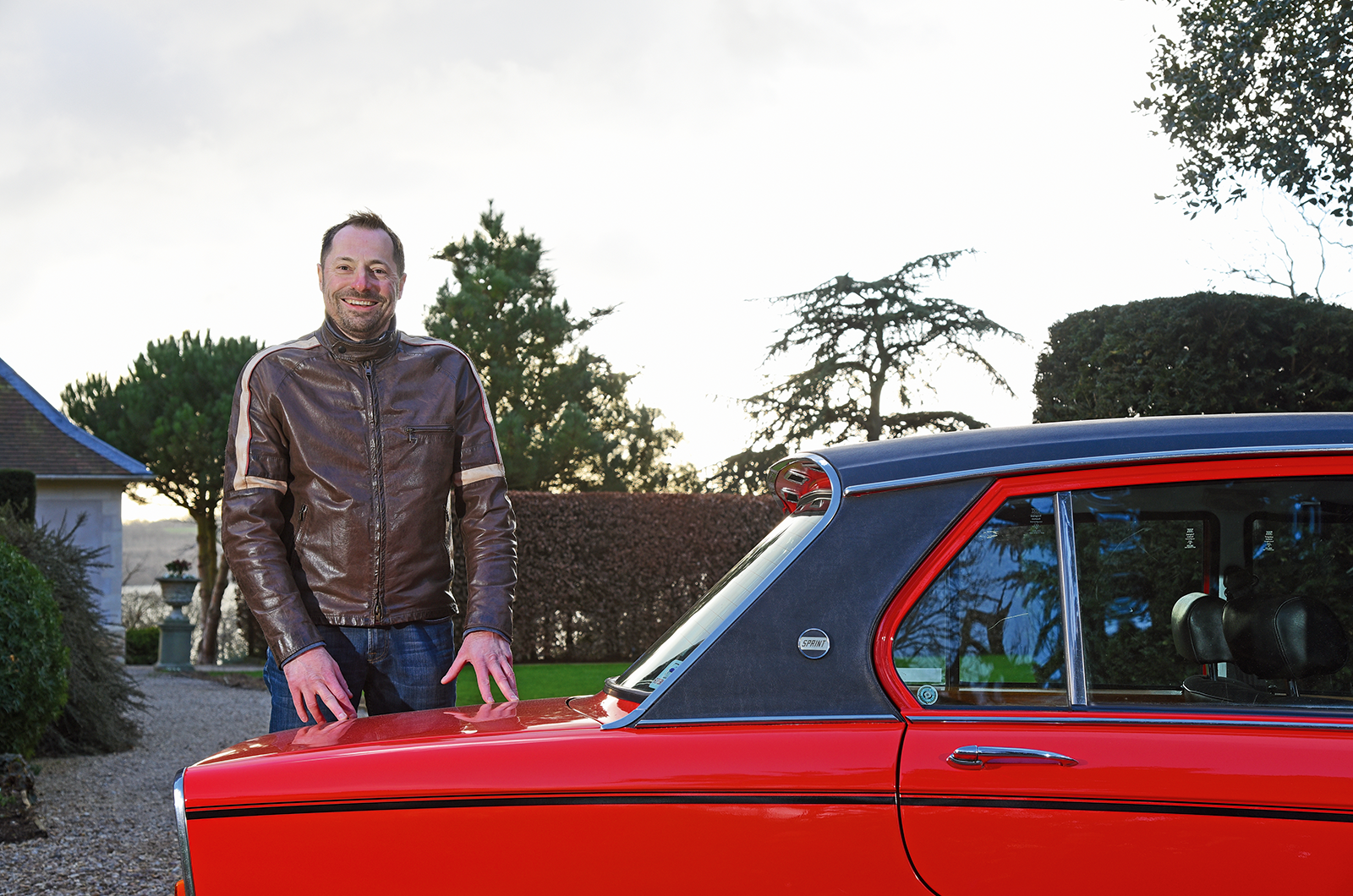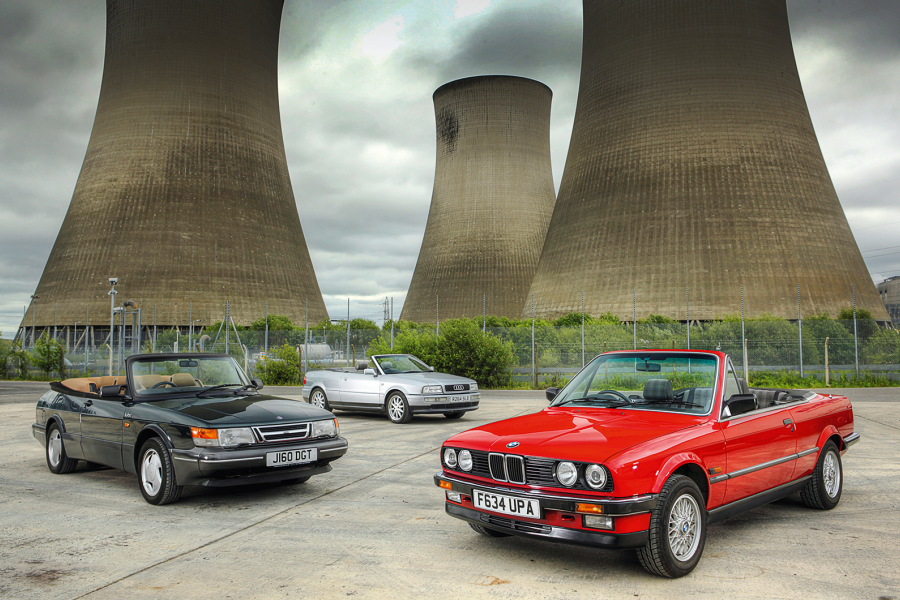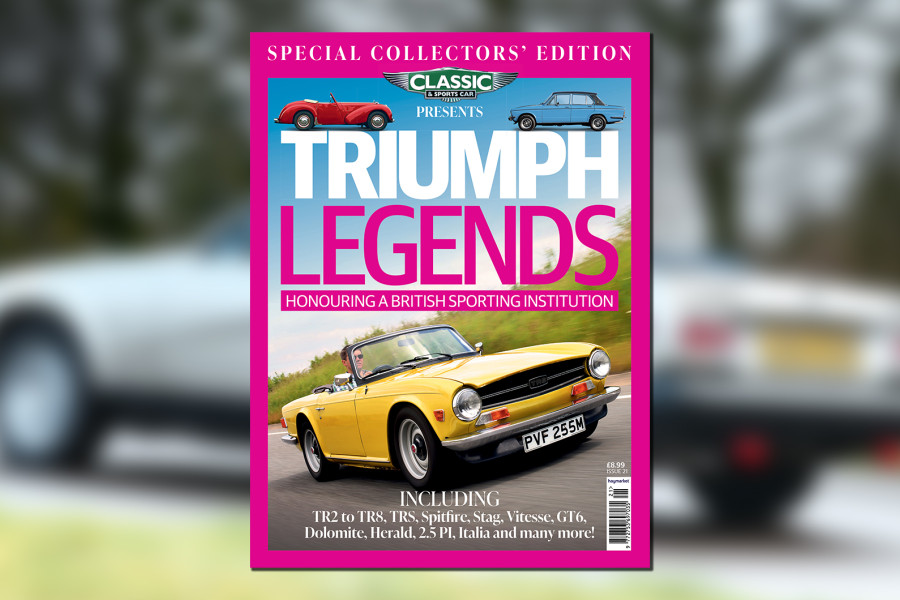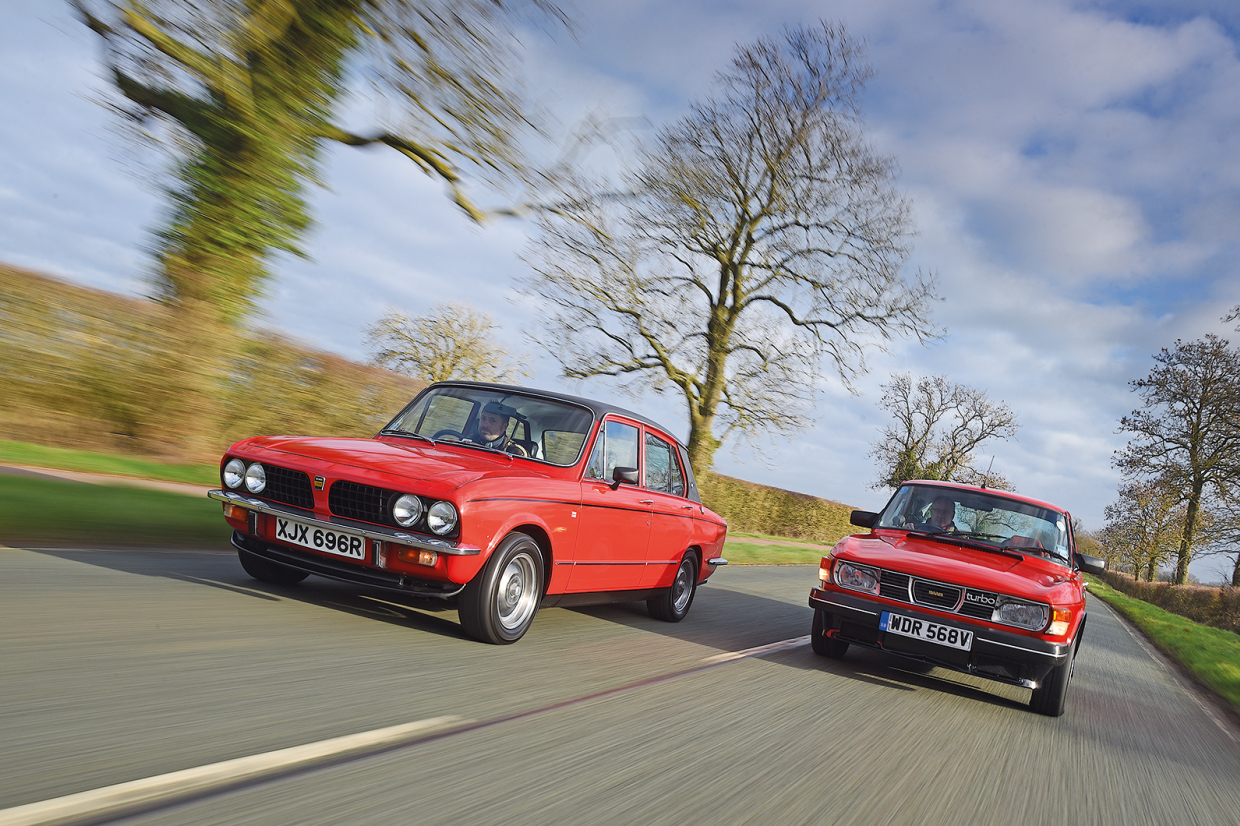
Think of the Dolomite Sprint and it conjures the image of a moustachioed man in an Afghan coat, with a Woodbine hanging out of the window, on a wet street in Birmingham. The sort of bloke who smelts things for a living, or maybe blows glass – ashtrays, not champagne flutes.
Toeing the line in the adjacent lane is the Dolly’s Nordic rival, the futuristic Saab 99 – its brushed-aluminium-effect ‘turbo’ script giving bragging rights to the turtle-necked wearer of thick-rimmed glasses behind the wheel.
The two cars could hardly be more different and yet, beneath their bonnets, the 99 turbo and Dolomite Sprint share powerplants derived from the same humble beginnings – the roots of which stretch back to a deal hammered out for mutual benefit in 1965.
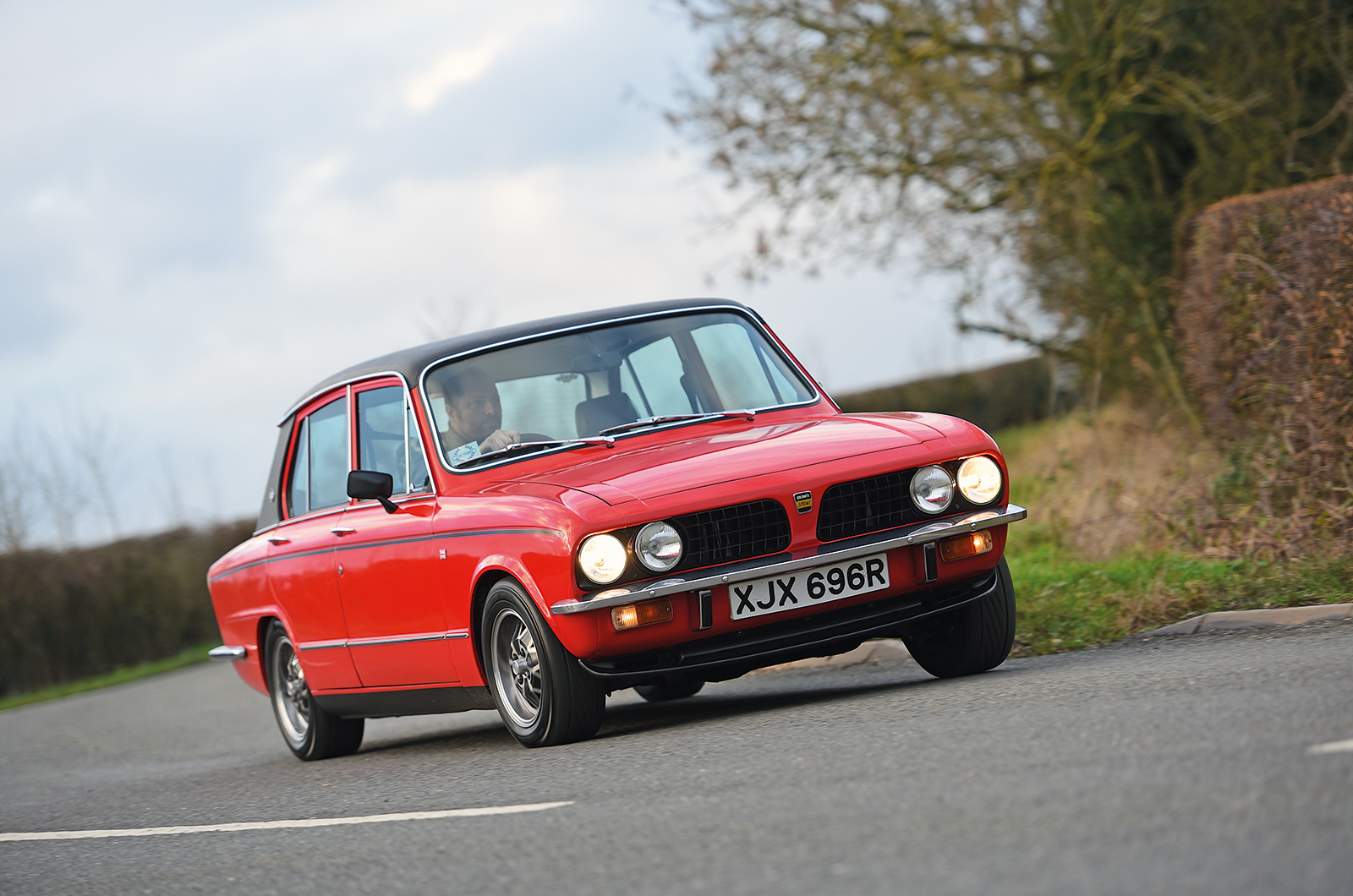
The Sprint’s lighter weight makes up for power deficit to the 99
Triumph set the ball rolling in 1963 when investigating possible replacements for its ageing engine range – a scope so broad that it even considered rotary power.
The Standard Eight-derived four-cylinder unit was elderly, and even the straight-six that powered the fuel-injected TR5 was a dinosaur in technological terms – too long and too heavy for the new breed of ’70s sports cars.


